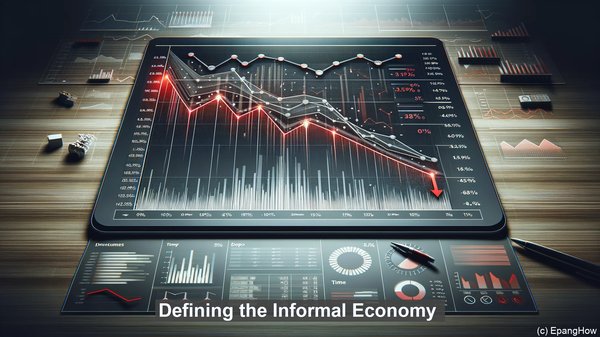Introduction: The Economic Landscape
Hello everyone! Today, we’re going to explore a fundamental aspect of the economy: the distinction between the informal and formal sectors. While both contribute to a nation’s economic fabric, they differ significantly in various aspects. So, let’s dive in!

Defining the Informal Economy
The informal economy encompasses economic activities that are not regulated or protected by the government. Often, these activities involve unregistered businesses, self-employment, or casual labor. Think of street vendors, small-scale artisans, or individuals offering services like house cleaning. The informal economy is characterized by a lack of formal contracts, social security, and legal protection.

Understanding the Formal Economy
On the other hand, the formal economy refers to activities that are recognized, regulated, and protected by the government. This includes large corporations, established businesses, and organizations that adhere to legal frameworks. In the formal economy, there are clear employment contracts, social security benefits, and adherence to labor laws.
Key Differences: Informal vs. Formal
One of the primary distinctions lies in the level of regulation. The formal economy operates within a structured framework, with laws and regulations governing various aspects. In contrast, the informal economy often operates outside these frameworks, leading to challenges in monitoring, taxation, and ensuring fair practices. Another significant difference is in terms of job security and benefits. In the formal economy, employees enjoy benefits like health insurance, retirement plans, and paid leave. However, in the informal economy, such benefits are often absent, leaving individuals more vulnerable. Additionally, the informal economy is known for its flexibility. It can quickly adapt to changing market demands, as decisions are often made at an individual or small group level. The formal economy, with its hierarchical structures, may find it relatively slower to respond to market shifts.
The Economic Significance
Both the informal and formal economies play crucial roles in a nation’s economic landscape. The informal economy often serves as a safety net, providing employment opportunities, especially in regions with limited formal sector jobs. It also contributes to the overall GDP, although its exact share may be challenging to determine due to its unregulated nature. The formal economy, with its established businesses and corporations, drives innovation, investment, and economic growth. It often attracts foreign direct investment and contributes significantly to tax revenues. It’s important to note that the distinction between the informal and formal economy is not always clear-cut. There are often gray areas, with some activities falling in between. Governments and policymakers continually grapple with finding the right balance, ensuring regulation without stifling entrepreneurial spirit and innovation.
